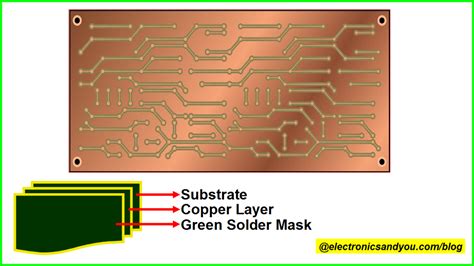
ALL ABOUT FLEX PCB
-
 Read more: An Introduction to Rigid Flex PCB | Structure, Costs, Manufacturer
Read more: An Introduction to Rigid Flex PCB | Structure, Costs, ManufacturerWhat is a Rigid-Flex PCB? A Rigid-Flex PCB is a unique type of printed circuit board that combines the best features of both rigid and Flexible PCBs. It consists of multiple layers of flexible and rigid substrates laminated together into a single structure. The flexible layers are made of thin, […]
-
 Read more: Shenzhen PCB Assembly Solution | Visit PCBA Factory Online
Read more: Shenzhen PCB Assembly Solution | Visit PCBA Factory OnlineIntroduction to PCBA Solutions in Shenzhen Shenzhen, located in southern China, has emerged as a global hub for electronics manufacturing and PCB Assembly (PCBA) solutions. The city is home to numerous PCBA factories that offer comprehensive services, from PCB design and fabrication to component sourcing and final assembly. In this […]
-
 Read more: What Are Flex PCB Stiffeners – Most Comprehensive Guide
Read more: What Are Flex PCB Stiffeners – Most Comprehensive GuideWhat are Flex PCB Stiffeners? Flex PCB stiffeners, also known as Rigid-Flex PCB stiffeners or reinforcement members, are rigid materials that are bonded to specific areas of a Flexible PCB to provide mechanical support and enhance the overall stability of the circuit. These stiffeners are strategically placed in regions where […]
-
 Read more: How Many Types of PCB Are in the Electronics Industry?
Read more: How Many Types of PCB Are in the Electronics Industry?What is a PCB? Before diving into the various types of PCBs, let’s first understand what a PCB is. A Printed Circuit Board is a flat insulating board that contains conductive tracks, pads, and other features etched from copper sheets laminated onto a non-conductive substrate. These boards are used to […]
-
8 Advantages of Rigid-Flex PCBs
Posted by
–
 Read more: 8 Advantages of Rigid-Flex PCBs
Read more: 8 Advantages of Rigid-Flex PCBsWhat are Rigid-Flex PCBs? Rigid-flex PCBs are a type of printed circuit board that combines both rigid and flexible substrates into a single board. The rigid sections provide structural support and house most of the components, while the flexible sections allow for bending and folding of the board, enabling 3D […]
-
 Read more: SMT Stencils for PCB Assembly Framed, Frameless, and Step-Up
Read more: SMT Stencils for PCB Assembly Framed, Frameless, and Step-UpIntroduction to SMT Stencils Surface-mount technology (SMT) stencils are essential tools in the printed circuit board (PCB) assembly process. They are used to apply solder paste onto the PCB pads, ensuring precise and consistent solder paste deposition. SMT stencils come in various types, including framed, frameless, and step-up stencils, each […]
-
 Read more: Overall Introduction of PCB Stencils – Types, Use, and Costs
Read more: Overall Introduction of PCB Stencils – Types, Use, and CostsWhat are PCB Stencils? PCB stencils, also known as solder paste stencils or SMT Stencils, are thin metal sheets with precise cutouts that match the solder pad pattern on a printed circuit board (PCB). They are used during the surface mount technology (SMT) assembly process to apply solder paste onto […]
-
 Read more: Heavy Copper PCB Manufacturer at One-Stop Up to 14 oz
Read more: Heavy Copper PCB Manufacturer at One-Stop Up to 14 ozIntroduction to Heavy copper PCB Heavy Copper PCBs, also known as thick copper PCBs, are printed circuit boards that feature copper traces thicker than the standard 1 oz (35 μm) thickness. These PCBs are designed to handle high current applications, improve thermal management, and enhance the overall reliability of electronic […]
-
PCB Materials-The basic components of the PCB
Posted by
–
 Read more: PCB Materials-The basic components of the PCB
Read more: PCB Materials-The basic components of the PCBPCB Substrate Materials The substrate is the foundation of a PCB, providing mechanical support and electrical insulation for the components and traces. The choice of substrate material depends on factors such as the intended application, operating environment, and cost. Common PCB substrate materials include: FR-4 FR-4 is the most widely […]
-
 Read more: What is Four-Terminal Sensing: Micro Resistance Test for Advanced PCB
Read more: What is Four-Terminal Sensing: Micro Resistance Test for Advanced PCBIntroduction to Four-Terminal Sensing Four-terminal sensing, also known as Kelvin sensing, is a highly accurate method for measuring low resistances in advanced printed circuit boards (PCBs). This technique is particularly useful in applications where precise resistance measurements are critical, such as in high-current circuits, high-precision analog circuits, and advanced PCB […]




